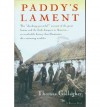Currently reading
Paddy's Lament, Ireland 1846-1847: Prelude to Hatred
Pivot: The Only Move That Matters Is Your Next One
When in French: Love in a Second Language
Beyond the Job Description: How Managers and Employees Can Navigate the True Demands of the Job
Vision and Art: The Biology of Seeing
Achieving Your Potential As A Photographer: A Creative Companion and Workbook
Reclaiming Conversation: The Power of Talk in a Digital Age
Picture Perfect Practice: A Self-Training Guide to Mastering the Challenges of Taking World-Class Photographs (Voices That Matter)
Man's Search for Meaning
Terms of Service: Social Media and the Price of Constant Connection
I Wasn't Ready to Say Goodbye: Surviving, Coping and Healing after the Sudden Death of a Loved-One
 Although the chapter on the loss of a sibling is the shortest in the book, one of the co-authors is a grieving sibling and it is useful to read / skim the rest of the book as well. Co-written by a woman whose ex-husband, son of her 12 year son, died suddenly. So both authors write from the perspective of those whose grieving may be overlooked or marginalized. Chapters:1. the starting point2. notes for the first few weeks3. understanding the emotional and physical effects of grief4. the world upside down5. the stages of grief6. myths and misunderstandings of the grieving process7. grief blocks8. relating to others9. helping children cope with grief10. special occasions and challengesPART 2 -- SHARING OUR STORIES11. the loss of a friend12. the loss of a parent13. the loss of a child14. the loss of a partner15. the loss of a siblingPART 3 -- PATHWAYS THROUGH GRIEF16. pathways through grief -- q & a17. self-help and therapy18. grief recovery exercises (a somewhat unique feature -- while I've seen some of the exercises suggested elsewhere, I hadn't really seen them gathered in a list like this).19. resources and support20. where am I now? notes from the authors21. appendix -- worksheets and forms (the memorial service, the eulogy, a checklist of calls to make, friends support group invitationindex, bibliographySo it touches on a lot, but doesn't go too deeply. Some of the personal stories were the most helpful aspect of the book to me. I read it at over 2 years, beyond the time that I've been drawn to this type of book intensely. So it may have engaged me more earlier on. I would still recommend it as a secondary book though, because of the perspectives of the authors and kind of a all-in-one volume.
Although the chapter on the loss of a sibling is the shortest in the book, one of the co-authors is a grieving sibling and it is useful to read / skim the rest of the book as well. Co-written by a woman whose ex-husband, son of her 12 year son, died suddenly. So both authors write from the perspective of those whose grieving may be overlooked or marginalized. Chapters:1. the starting point2. notes for the first few weeks3. understanding the emotional and physical effects of grief4. the world upside down5. the stages of grief6. myths and misunderstandings of the grieving process7. grief blocks8. relating to others9. helping children cope with grief10. special occasions and challengesPART 2 -- SHARING OUR STORIES11. the loss of a friend12. the loss of a parent13. the loss of a child14. the loss of a partner15. the loss of a siblingPART 3 -- PATHWAYS THROUGH GRIEF16. pathways through grief -- q & a17. self-help and therapy18. grief recovery exercises (a somewhat unique feature -- while I've seen some of the exercises suggested elsewhere, I hadn't really seen them gathered in a list like this).19. resources and support20. where am I now? notes from the authors21. appendix -- worksheets and forms (the memorial service, the eulogy, a checklist of calls to make, friends support group invitationindex, bibliographySo it touches on a lot, but doesn't go too deeply. Some of the personal stories were the most helpful aspect of the book to me. I read it at over 2 years, beyond the time that I've been drawn to this type of book intensely. So it may have engaged me more earlier on. I would still recommend it as a secondary book though, because of the perspectives of the authors and kind of a all-in-one volume.













